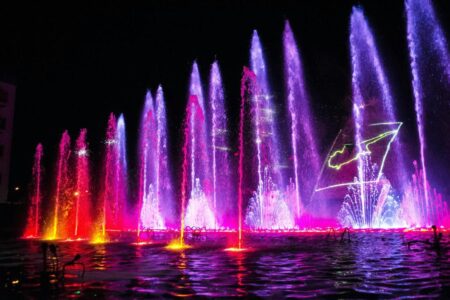Many tourists visiting Cyprus, as well as locals, are often unaware of the treasures hidden beneath its waters. The island’s underwater world attracts maritime historians, archaeologists, and divers. Sunken ships off the coast of Cyprus boast incredible diversity and rich history. Each site offers access to rare artifacts, unique marine flora and fauna, and numerous opportunities for exploration.
The underwater world of Cyprus is like an open museum accessible only to those who dare to dive deeper. These sunken vessels reflect ancient trade connections and modern maritime routes. Diving into these sites provides insights into centuries of shipbuilding evolution and trade while immersing visitors in the atmosphere of bygone eras. Below, we explore some of the most renowned underwater attractions.
Contents
- 1 Overview of Sunken Ships
- 2 “Zenobia”: The Legendary Car Ferry
- 3 “Lady Thetis” and “Constandis”: Artificial Reefs off Limassol
- 4 “Alexandria”: A Hidden Gem Near Larnaca
- 5 Ancient Shipwrecks: The Kyrenia Ship and More
- 6 Modern and Artificially Sunk Ships
- 7 Diving Tourism Development in Cyprus
- 8 Preservation and Ethical Considerations
Overview of Sunken Ships
The waters around Cyprus host both ancient and modern ships. Some met their fate due to storms or collisions with reefs, while others were intentionally sunk to create artificial reefs and attract divers. Each wreck has unique features appealing to both specialists and enthusiasts.
The depths of these wrecks range from shallow waters to deeper zones. Some ships are accessible even to beginners with basic training, while others require advanced skills and experience. This variety ensures there’s a dive site suitable for every diver’s skill level.
Many sunken ships have become homes to marine life. Artificially sunk vessels turn into reefs covered with soft corals, sponges, and colonies of invertebrates. Shoals of fish and other marine creatures make these locations especially picturesque. When visiting these sites, it’s important to preserve the ecosystem in its natural state.
“Zenobia”: The Legendary Car Ferry
The most famous shipwreck in Cyprus is the Swedish ferry Zenobia. In 1980, the vessel sank during its maiden voyage near the port of Larnaca. With a length of 178 meters, it is one of the region’s largest underwater attractions. Today, Zenobia is considered an icon of Cypriot diving and a must-see for experienced divers.

The wreck lies at depths ranging from 16 to 42 meters. Excellent visibility allows divers to examine the hull, interior spaces, trucks, and equipment in detail. The abundance of marine life – from colorful small fish to large barracudas – makes the dive a true adventure. Zenobia is rightly listed among the world’s top diving sites.
There are several diving routes to explore Zenobia. Experienced divers delve into the lower decks, holds, and cargo left behind after the disaster. Beginners often limit themselves to the upper parts of the ship and nearby areas. This versatility makes Zenobia suitable for divers of all skill levels. The well-developed infrastructure in Larnaca ensures safe and well-organized dives.

The historical significance of Zenobia is also noteworthy. Researchers continue to study the causes of its sinking, drawing lessons from the past. The ship’s unique preservation is due to fresh water in its ballast tanks, creating unusual conditions. Each dive reveals new details and aspects of this remarkable wreck.
“Lady Thetis” and “Constandis”: Artificial Reefs off Limassol
Not all shipwrecks are accidental. In 2014, the Cypriot government intentionally sank the Lady Thetis and Constandis near Limassol. These ships became the foundation for artificial reefs and a draw for underwater tourists. Their metal structures are gradually covered with marine flora and fauna, transforming into unique underwater ecosystems.
The Lady Thetis and Constandis lie at depths of 18–23 meters, making them accessible to divers with basic skills. The absence of strong currents and their convenient location make these sites ideal for divers looking to expand their experience. However, care must be taken to avoid damaging the forming coral colonies and sponges.
Over time, these wrecks have become true underwater oases. Shoals of vibrant fish swirl around them, small crustaceans hide in crevices, and soft corals add rich colors to the landscape. These artificial reefs successfully combine tourism development with marine conservation, offering tourists unique experiences while providing habitats for marine flora and fauna.
“Alexandria”: A Hidden Gem Near Larnaca
Zenobia is not the only wreck attracting divers near Larnaca. The fishing trawler Alexandria, sunk not far from the famous ferry, adds to the list of underwater attractions. Less popular than Zenobia, Alexandria offers a more secluded diving experience, perfectly complementing the grandeur of its larger neighbor. This combination makes it especially appealing to divers seeking variety in their underwater adventures.
The wreck is at a depth suitable for safe exploration, allowing divers to examine its hull details. Its well-preserved structure and rigging create an interesting relief ideal for underwater photography. However, it’s essential to check equipment before diving, as even seemingly straightforward sites can pose unexpected challenges.
Unlike Zenobia, Alexandria is less crowded, giving divers more time for photography, contemplation, and quiet exploration. Its calm atmosphere makes it an ideal choice for those who prefer relaxed, unhurried dives.
Ancient Shipwrecks: The Kyrenia Ship and More
Cyprus’s waters conceal not only modern vessels but also unique relics from antiquity. One of the most significant archaeological finds is the Kyrenia Ship, dating back to the 4th century BCE. Discovered off the northern coast near Kyrenia, this ship provided scholars with rare insights into ancient trade routes and seafaring, greatly enriching our understanding of life in the ancient Mediterranean.

The Kyrenia Ship revealed important knowledge about shipbuilding of that era. Artifacts such as amphorae, pottery, and other items offered glimpses into the culture, economy, and daily life of ancient mariners. Today, this historical treasure is displayed in the Kyrenia Castle Museum, where visitors can see well-preserved fragments of the hull and its cargo.
Archaeologists continue to uncover fragments of ancient ships along Cyprus’s coast. The preservation of these relics depends on weather conditions, currents, and human activity. Each new discovery adds to our understanding of ancient trade, making Cyprus a bridge between past and present.
Modern and Artificially Sunk Ships
Many other wrecks attract divers along Cyprus’s coastline. Notable examples include the Nemesis III, Liberty, and White Star near Protaras and Ayia Napa. These ships were deliberately sunk to create artificial reefs, boosting underwater tourism and enriching marine ecosystems. This initiative by local authorities draws divers from around the globe.
Depths at these sites accommodate divers of varying skill levels. Beginners can explore ship hulls and admire schools of fish and coral growth, while experienced divers examine interiors, uncover intriguing details, and photograph rare marine organisms. Care is needed to avoid damaging fragile underwater ecosystems.
The Paphos area also hosts two significant wrecks: Vera K and HMS Cricket. Vera K intrigues with its unusual history, while HMS Cricket, a British gunboat from World War I, offers insights into military history and Cyprus’s role in global conflicts.
Diving Tourism Development in Cyprus
The underwater treasures of Cyprus are supported by well-developed infrastructure. Dive centers provide training, equipment rental, and experienced instructors. Thematic tours allow visitors to explore multiple sites over several days, making dives convenient and enjoyable.
Many centers are certified to international standards, and skilled guides ensure safety and comfort during dives. Pre-booking programs is especially important during peak seasons as the popularity of diving in Cyprus continues to grow.
Government efforts to expand infrastructure include new piers, convenient entry points, training facilities, and equipment preparation zones. Promotional campaigns, underwater archaeology festivals, and sports events further enhance interest in diving. These initiatives position Cyprus as a competitive destination for underwater tourism.
Preservation and Ethical Considerations
Sunken ships are not just tourist attractions but also significant historical monuments and sometimes resting places for lost sailors. Disturbing or looting artifacts leads to the loss of cultural heritage. Divers must adhere to ethical norms and respect the underwater world.
Removing ancient artifacts without archaeologists’ approval is strictly prohibited. Damaging ship hulls accelerates their deterioration, threatening the preservation of historical objects. Laws regulating underwater activities and conscious attitudes from divers are crucial for safeguarding these treasures for future generations.
The underwater world of Cyprus offers a wealth of diversity. From the legendary Zenobia to the ancient Kyrenia Ship, this region provides unique opportunities for exploration. Artificially sunk vessels not only enrich ecosystems but also promote tourism, offering divers new horizons for discovery.
With locations suitable for all skill levels, every visitor can find the perfect dive site. Beginners can enjoy shallow spots with good visibility, while experienced divers explore holds, rare species, and unique artifacts. This makes Cyprus a standout destination on the global diving map.
The combination of historical value, natural beauty, and modern infrastructure places Cyprus among the best destinations for underwater exploration. Thoughtful use of underwater resources and protection of artifacts ensure this heritage is preserved. Sunken ships will continue to inspire researchers, scientists, and sea enthusiasts to make new discoveries.
















